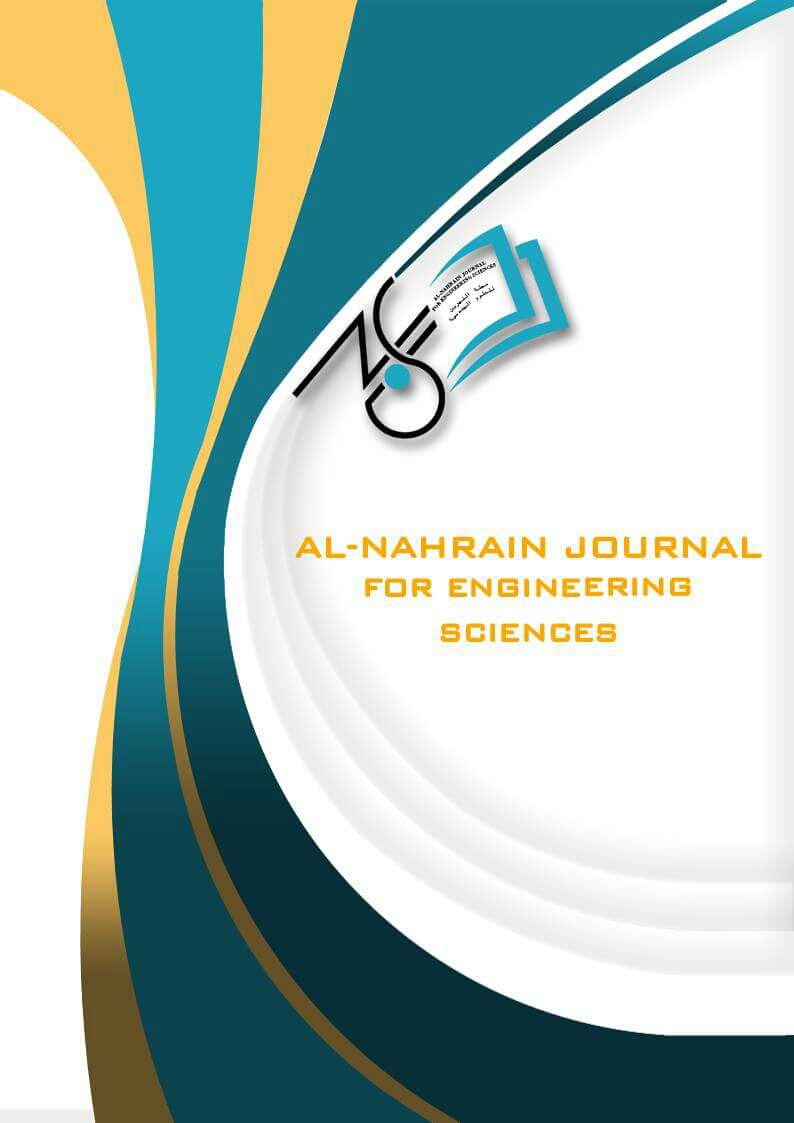Design and Analysis of Composite Biomaterial Bone Graft Plate
DOI:
https://doi.org/10.29194/NJES.26040278Keywords:
Hydroxyapatite, Polymer, Solid Work, ANSYSAbstract
The mixing technique was applied in this study to enhance the strength performance of the cement. The addition of 3% by weight of hydroxyapatite (HA) nanoparticles were mixed with 97% polymethyl methacrylate (PMMA) acrylic polymer, which has a nano size to serve as the matrix material. The surface roughness and continuous porosity of the bone cement were found to be slightly increased by the incorporation of nanoparticles, which enhanced bone-implant osseointegration and ingrowth. Atomic force microscopy (AFM) analysis revealed that the addition of hydroxyapatite (HAp) nanoparticles resulted in a surface roughness value (Sa) of 16.25 nm, which is similar to that of natural bone. The energy-dispersive X-ray spectroscopy (EDS) mapping results discover precentor material and uniform distribution. The Sample exhibited promising results in the antibacterial test, showing efficacy against bacteria both with and without sterilization, confirming its antibacterial properties. The mechanical tests conducted on the sample, including tensile, compression, bending and Vickers hardness tests, yielded favorable results and indicated that the sample is suitable for its intended application. In the theoretical works the design of the bone, screw, and bone plate was conducted using SolidWorks, followed by an analysis using ANSYS under both axial and bending load conditions. The theoretical analysis revealed that the safety factor was less than 1 when an axial load of 13 N was applied and a bending load of 2 N was applied, indicating that the structure may not be able to withstand these loads safely. Under both ambient and physiologically relevant conditions in the human body, HA and PMMA have demonstrated to be excellent choices for enhancing the clinical performance of bone cement. This, in turn, can lead to increased longevity of implants, decreased patient risk, and lower healthcare costs
Downloads
References
P. A. Downey and M. I. Siegel, “Bone biology and the clinical implications for osteoporosis,” Physical Therapy, vol. 86, no. 1. American Physical Therapy Association, pp. 77–91, 2006. doi: 10.1093/ptj/86.1.77.
R. Florencio-Silva, G. R. D. S. Sasso, E. Sasso-Cerri, M. J. Simões, and P. S. Cerri, “Biology of Bone Tissue: Structure, Function, and Factors That Influence Bone Cells,” BioMed Research International, vol. 2015. Hindawi Publishing Corporation, 2015. doi: 10.1155/2015/421746.
R. R. Ruimerman, “Modeling and remodeling in bone tissue,” (Research TU/E / Graduation TU/E), Biomedical Engineering]. Technische Universiteit Eindhoven., Jan. 2005, doi: 10.6100/ir583545.
W. S. Tak and S. C. Ryu, “The Methylcellulose/Hydroxyapatite composite for bone graft,” Advanced Composite Materials, vol. 29, no. 4, pp. 389–397, Jul. 2020, doi: 10.1080/09243046.2020.1724456.
H. Fesseha and Y. Fesseha, “Bone Grafting, Its Principle and Application: A Review,” Osteol Rheumatol Open J, vol. 1, no. 1, pp. 43–50, 2020, doi: 10.17140/ORHOJ-1-113..
V. K. Ganesh, K. Ramakrishna, and D. N. Ghista, “Biomechanics of bone-fracture fixation by stiffness-graded plates in comparison with stainless-steel plates,” Biomed Eng Online, vol. 4, Jul. 2005, doi: 10.1186/1475-925X-4-46.
P. Kumar, B. Vinitha, and G. Fathima, “Bone grafts in dentistry,” Journal of Pharmacy and Bioallied Sciences, vol. 5, no. SUPPL.1. Jun. 2013. doi: 10.4103/0975-7406.113312.
T. A. Osswald, E. Baur, S. Brinkmann, K. Oberbach, and E. Schmachtenberg, International Plastics Handbook: The Resource for Plastics Engineers. 2006.
S. Kowsar and R. Soheilifard, “The effect of the degradation pattern of biodegradable bone plates on the healing process using a biphasic mechano-regulation theory,” Biomech Model Mechanobiol, vol. 20, no. 1, pp. 309–321, Feb. 2021, doi: 10.1007/s10237-020-01386-5.
Salih, Abdusamad A. "Finite Element Method." Department of Aerospace Engineering Indian Institute of Space Science and Technology Thiruvananthapuram-695547, India, Z. American Journal of Physics1997 65.6 (2012): 537-543.
Downloads
Published
Issue
Section
License
Copyright (c) 2024 Dunia Abdulsahib Hamdi, Fatima Mowafaq Khider

This work is licensed under a Creative Commons Attribution-NonCommercial 4.0 International License.
The authors retain the copyright of their manuscript by submitting the work to this journal, and all open access articles are distributed under the terms of the Creative Commons Attribution-NonCommercial 4.0 International (CC-BY-NC 4.0), which permits use for any non-commercial purpose, distribution, and reproduction in any medium, provided that the original work is properly cited.














